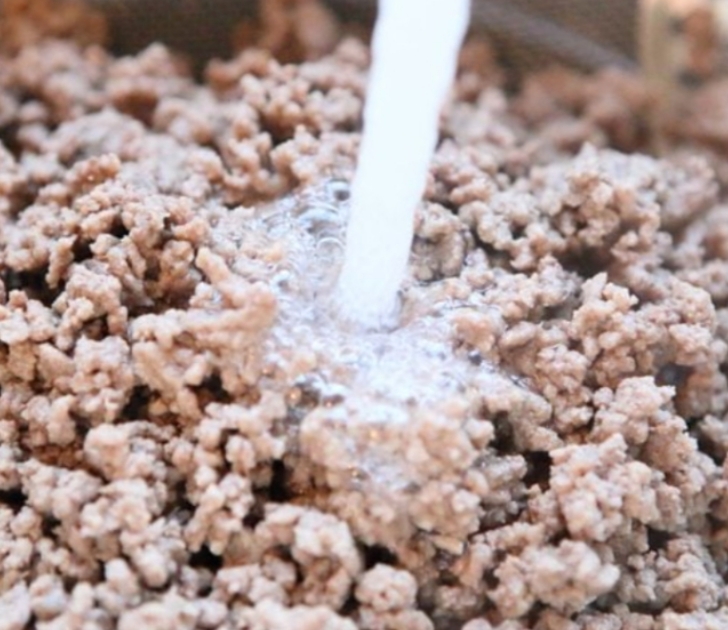Should You Rinse Ground Beef? – A Complete Guide
Introduction
Ground beef is a staple in countless kitchens worldwide. It’s the backbone of comfort foods like burgers, tacos, chili, spaghetti Bolognese, meatloaf, and shepherd’s pie. But there’s one question that sparks debates among home cooks and professional chefs alike: Should you rinse ground beef before or after cooking? Understanding the science behind this practice can help you make the best choice for flavor, texture, and food safety in your kitchen.
Origin
The idea of rinsing meat is not new. Historically, people rinsed cuts of meat to remove visible dirt, blood, or bone fragments before modern sanitation and refrigeration became standard. However, as food safety standards improved, the need for rinsing diminished. The controversy around rinsing ground beef likely arose as people sought ways to reduce fat and calories — particularly during the low-fat diet craze of the late 20th century.
Cultural Significance
This discussion has cultural weight because ground beef is a cornerstone of American cuisine and beyond. Whether it’s in Tex-Mex tacos, Italian-American pasta sauces, or classic diner-style burgers, the way you prepare ground beef affects the flavor, nutritional profile, and dining experience. The choice to rinse or not rinse has become a kind of culinary philosophy, representing the balance between health consciousness and preserving the full taste experience.
Ingredients Quantity (Example for 1 lb of Ground Beef)
- 1 pound ground beef (80/20 blend for balanced flavor and moisture)
- ½ teaspoon salt (added after cooking)
- ¼ teaspoon black pepper
- 1 teaspoon cooking oil (optional, if using leaner beef to prevent sticking)
Optional Additions
- Garlic powder or onion powder – for more flavor during cooking
- Worcestershire sauce – enhances beefy depth
- Chili flakes or paprika – adds a gentle heat
- Fresh herbs (thyme, parsley) – brightens the final dish
Tips for Success
- Skip rinsing: Rinsing removes seasoning, flavor compounds, and desirable fats that make beef taste rich.
- Drain, don’t rinse: If excess grease is a concern, simply drain the fat after browning by tilting the pan and spooning or blotting it out with paper towels.
- Use the right fat ratio: 80/20 ground beef strikes a balance between flavor and lower grease. For a leaner option, use 90/10 or 93/7 but cook gently to avoid dryness.
- Brown properly: Spread beef evenly in the pan and let it sear without stirring for a minute or two to develop a crust and deep flavor.
Instructions
- Heat a skillet over medium-high heat. Add a small amount of oil if using very lean beef.
- Place the ground beef in the skillet, breaking it into chunks.
- Allow the beef to brown undisturbed for 1–2 minutes to develop flavor, then stir and continue cooking until no pink remains.
- Tilt the skillet and drain excess grease with a spoon or carefully blot with paper towels.
- Season with salt, pepper, and optional flavorings after draining to keep seasonings from being lost.
- Use the cooked beef in your favorite dish — tacos, pasta sauce, casseroles, or chili.
Description
Properly browned and drained ground beef should be flavorful, juicy, and free from excess grease without being dry. By skipping the rinse, you maintain its natural savory richness and texture, which carries over into any dish you prepare.
Nutritional Information (Per 3 oz Cooked, 80/20 Ground Beef)
- Calories: ~230
- Protein: ~22g
- Fat: ~15g (varies after draining)
- Saturated Fat: ~6g
- Carbohydrates: 0g
- Sodium: varies depending on added salt
Conclusion
Rinsing ground beef might seem like a calorie-saving hack, but it ultimately sacrifices flavor, alters texture, and can create a food safety hazard by spreading bacteria around the sink area. Draining is the safer, tastier, and more effective method to reduce excess grease.
Recommendation
Always brown and drain rather than rinse. If you want to cut down on fat, start with a leaner blend or choose grass-fed beef for a healthier fat profile. Pair your beef with plenty of vegetables, beans, or whole grains to create balanced meals.
Embracing Healthful Indulgence
Enjoying ground beef is about mindful preparation, not deprivation. Choosing lean beef, draining fat, and seasoning well lets you savor the rich flavor of this kitchen essential without compromising your health goals. Cooking at home gives you full control over fat content, sodium levels, and portion size — so you can indulge wisely and guilt-free.
Would you like me to include a quick comparison table (rinsed vs. drained ground beef) so you can visually see the flavor, fat, and food safety differences?

